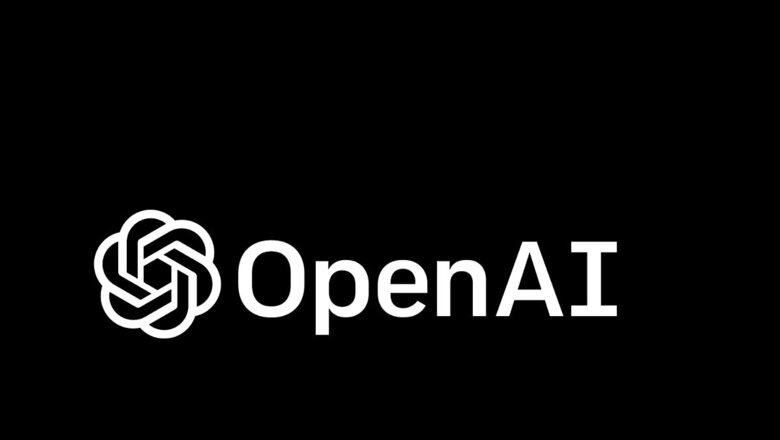
views
OpenAI plans to introduce major updates for developers next month to make it cheaper and faster to build software applications based on its artificial intelligence models, as the ChatGPT maker tries to court more companies to use its technology, sources briefed on the plans told Reuters.
The updates include the addition of memory storage to its developer tools for using AI models. This could theoretically slash costs for application makers by as much as 20-times, addressing a major concern for partners whose cost of using OpenAI’s powerful models could pile up quickly, as they try to build sustainable businesses by developing and selling AI software.
The company also plans to unveil new tools such as vision capabilities that will enable developers to build applications with the ability to analyze images and describe them, with potential use cases in fields from entertainment to medicine.
The new features mark the company’s ambition to expand beyond a consumer sensation into one also offering a hit developer platform, as its Chief Executive Sam Altman has envisioned. The company toiled in relative obscurity outside of the tech industry as a non-profit co-founded by Elon Musk and Altman in 2015. Musk doesn’t currently own a stake in the company.
The new features are expected to be rolled out at OpenAI’s first-ever developer conference in San Francisco on November 6, sources said. They are designed to encourage companies to use OpenAI’s technology to build AI-powered chatbots and autonomous agents that can perform tasks without human intervention, said sources, who asked not to be named for discussing the company’s private plans.
OpenAI declined to comment.
The company burst onto the scene last November when it launched ChatGPT, enticing hundreds of millions of people to try out the chatbot that responded to questions and commands in human-like ways, turning it into one of the world’s fastest growing consumer applications.
OpenAI has high hopes for sales growth. As Reuters first reported last December, OpenAI executives expected to close this year with $200 million in revenue and $1 billion by 2024.
More recently, the company has faced some challenges courting outsiders to build businesses using its technology. Making OpenAI indispensable to other companies building apps is among the most important strategic objectives for Altman.
He has met with developers, expressing his desire to build a new ecosystem based on OpenAI’s models, which is now baked into myriad applications, from DoorDash to writing assistant Jasper.
The planned release of the so-called stateful API (Application Program Interface) will make it cheaper for companies to create applications by remembering the conversation history of inquiries. This could dramatically reduce the amount of usage developers need to pay for. Currently, processing a one-page document using GPT-4 could cost 10 cents, depending on the length and complexity of the input and output, according to pricing on OpenAI’s website.
Another update, vision API, would allow people to build software that can analyze images, weeks after the feature became available for ChatGPT users. Giving developers this tool also marks an important step of OpenAI rolling out so-called multi-modal capabilities, which process and generate different types of media besides text, such as images, audio and video.
KEEPING DEVELOPERS HAPPY
These releases are designed to attract more developers to pay to access OpenAI’s model to build their own AI software for a variety of uses, such as writing assistants or customer service bots.
Investors have poured over $20 billion this year into AI startups, many of which rely on OpenAI or another foundation model company’s technology, according to PitchBook data.
But investors are worried about these startups’ reliance on companies like OpenAI or Google because this could make them vulnerable to being replicated by rivals or by the bigger companies themselves through product updates.
Meanwhile, startups are also trying to diversify the types of models they use, experimenting with OpenAI competitors and open-source options such as Meta’s Llama. That makes it important for OpenAI to distinguish itself from deep-pocketed rivals like Google.
Keeping developers happy has been a major focus for OpenAI, these sources told Reuters. While ChatGPT has been wildly successful among consumers, OpenAI’s ambition to win over other companies has been less smooth.
Earlier this year, the company rushed to release ChatGPT plugins, add-on tools that allow developers to create applications within ChatGPT. OpenAI hoped that plugins would be its equivalent of Apple’s iOS App Store, gaining an advantage over rival chatbots like Google’s Bard.
Developers whose plugins are in the top 30 or so “popular” category described an initial burst of hype, followed by a steep drop-off in interest. The popular Scholar AI plugin had about 7,000 users a day as of late August, estimated its developer Lakshya Bakshi. ChatGPT attracts about 180 million monthly active users.
Altman has publicly acknowledged there is more work to do. Earlier this year, Altman admitted to a group of developers in London that plugins have not gained market traction.




















Comments
0 comment